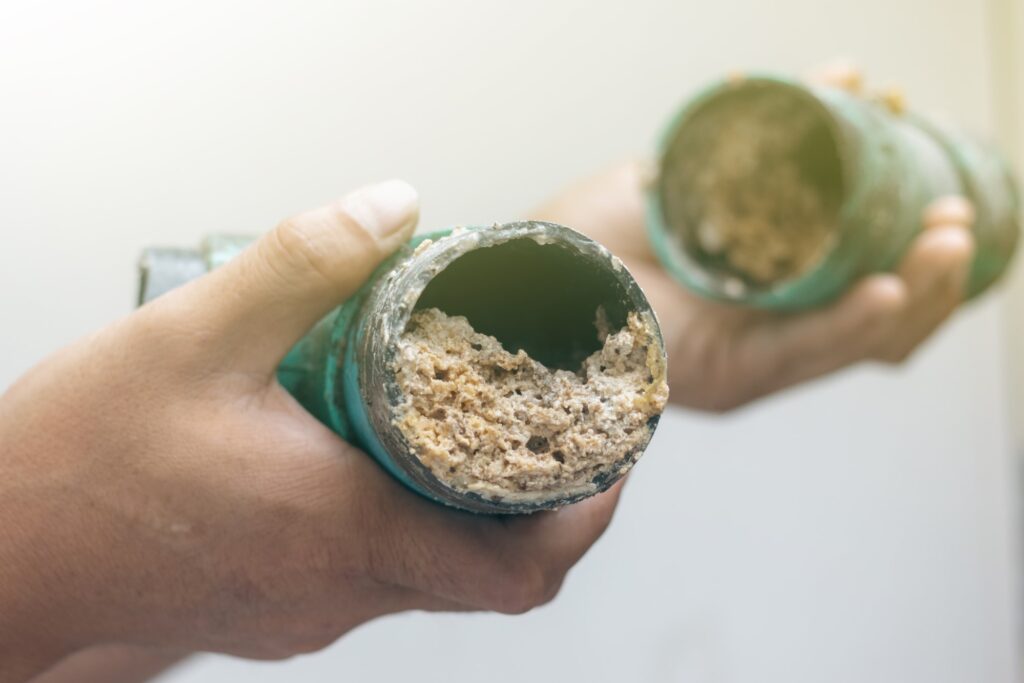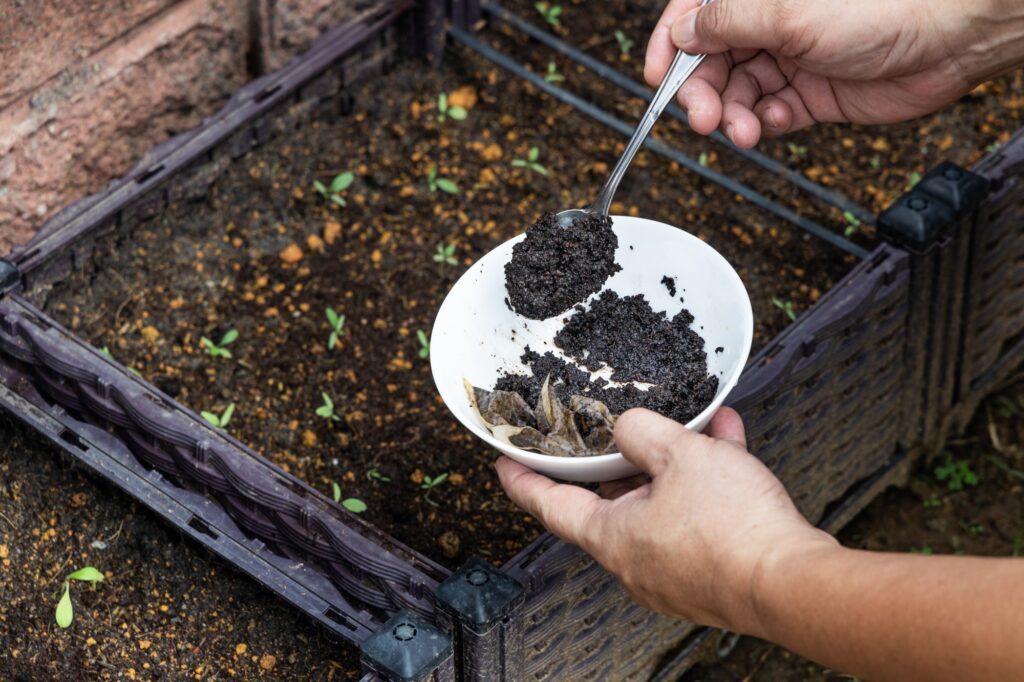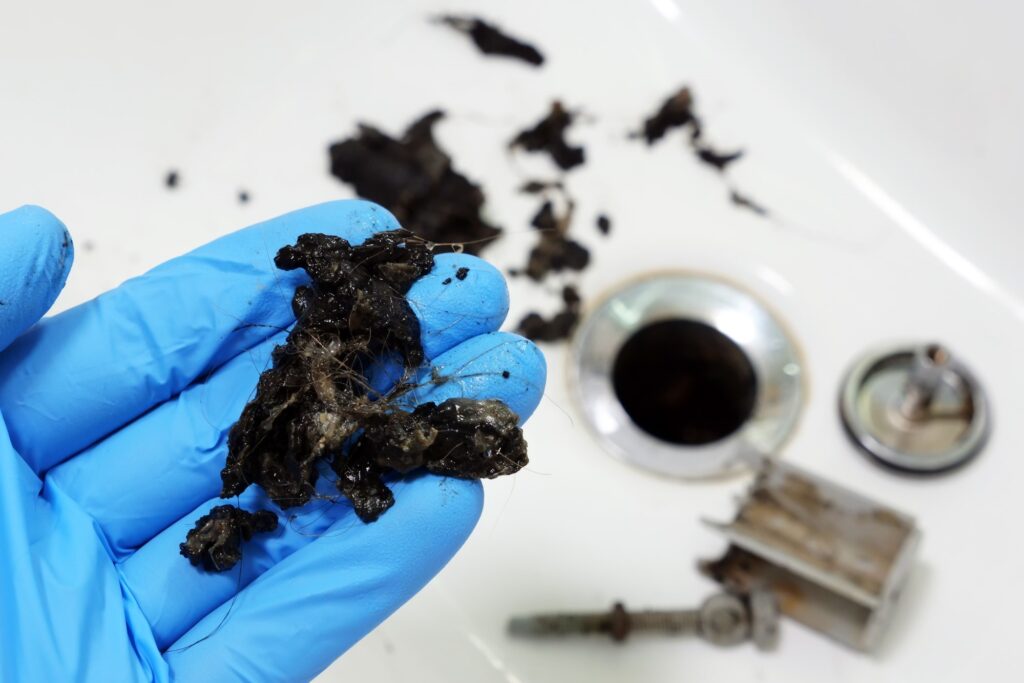Despite being called a garbage disposal, some items should never go down the kitchen drain. Similarly, toilets should not be used as trash cans. Instead of putting these items down the drain, which can clog pipes, require a plumber or create issues in the wastewater treatment system, here’s how to properly dispose of waste in your kitchen and bathroom.
Save your garbage disposal

Fats, Oils and Grease (FOG)
Used cooking oils, grease and fats shouldn’t go down the drain. As they cool, they harden and coat pipes. FOG (or FOGs) also doesn’t mix with water, so it must be removed during the water treatment process.
PROPER DISPOSAL: Pour the used FOG into a metal, glass or other heat-proof and sealable container, let it cool and place it in the trash. For some FOG, like bacon grease, you can cool it in the pan and then scrape it into the garbage bin. Some communities in our service area, such as the City of Madison, have opportunities for recycling used cooking oils into biodiesel.
Pasta, Rice, Oats & Grains
Avoid putting starchy solids, carbohydrates and grains, like pasta, rice or oats down your garbage disposal or drain. Even when cooked, these foods can absorb additional water and create plumbing issues like clogs or tangles.
PROPER DISPOSAL: Put solid carbs like pasta, rice and grains in your waste bin or compost.
Pasta Water
Leftover pasta water should also not go down the drain. Use the water for other purposes because, believe it or not, it has practical benefits at home if you know what to do with it!
IDEAS FOR DISPOSAL:
- Thicken sauces – starch in the pasta water acts as a thickener and pulls sauce together. It’ll also keep sauce from slipping off of noodles. Try freezing it in ice cube trays for convenient portions.
- Cook another batch – Leftover pasta water can last for a few days in the fridge, so reuse it for your next batch of rice or pasta.
- Soften legumes – Soak dried beans and legumes in leftover pasta water along with a bay leaf to shorten cooking time and make them more digestible.
- Steam vegetables – Conserve water and energy by using warm leftover pasta water to steam veggies on top.
- Soup base – Chefs often rely on pasta water for broths to elevate flavors, textures and thickness of soups or stews.
- Water plants – Leftover pasta water can nourish plants and act as a natural fertilizer.

Coffee Grounds
Putting coffee grounds down the drain may be tempting, but over time, these grounds create a sludge that can plug pipes in your home. Not only that, coffee remnants can coat the bottom of sewer pipes and collect in our grit basins at the plant. Materials that collect in our grit basins, for the most part (eventually), go to the landfill, but it takes a lot more energy along the way. Save energy and equipment by dumping coffee grounds properly at your home or business.
PROPER DISPOSAL: Coffee grounds should be disposed of in the trash can. Or better yet, put them in your compost bin for reuse in the garden.
Minimize backups in bathroom pipes
Wipes
Wipes of any kind, even those labeled flushable, are not actually safe to flush. “Flushable” wipes, baby wipes, cleaning wipes and other similar wipes are made with thicker fibers (and sometimes plastic fibers) that don’t break down in wastewater like toilet paper. These wipes clog pipes and get caught in our equipment, leading to failures and damage at the plant.
PROPER DISPOSAL: Put a garbage can next to toilets in your home or business and next to changing stations to collect wipes like these. Save the pipes!
Menstrual products
Even with signs, messages and packaging labels about this, it’s really important not to flush feminine hygiene products (tampons, applicators and pads) down the toilet. These items are bulky and their absorbent materials expand to clog pipes AND cause damage to sewerage district equipment, ultimately resulting in downtime for critical systems at our plant.
PROPER DISPOSAL: Put all tampons, applicators, menstrual pads and items for periods in the garbage bin. Toilets are not trash cans.
Paper Towels, Tissues, Rags AND UnderWear
Like unflushable wipes, thicker paper or cloth items don’t break down in wastewater like toilet paper. And these items clog pipes and can break our equipment.

PROPER DISPOSAL: If you’re in a jam and out of TP, put these non-flushable items in the trash (and not down toilets) after use.
hair
Hair from your body, especially long hair, can clog your sink, bath or shower drain (and further down your pipes.)
PROPER DISPOSAL: Use a drain cover to protect hair from going down the drain. Clear the drain cover and throw hair in the trash.
Pro tip for long hair: Brush your hair before taking a shower or bath to remove loose hair and minimize fall out in your tub.
Pet waste
Whether from dogs or cats, pet waste should not be flushed. Cat litter is not something to flush. Because it’s absorbent, it can clump on pipe walls, create sediment in sewers and collect in our grit basins. Cat feces by itself (not caked in litter) should also not be flushed, as it can create toxoplasmosis parasites that can infect marine animals.
PROPER DISPOSAL: Kitty litter or cat litter should be put in the trash. Dog poop on its own can be flushed as long as it is unbagged. If dog poo is bagged (no matter if the bags are labeled compostable or not), it’s a hard no and belongs in the garbage.
Natural methods for unclogging drains
There are some natural ways you can unclog your drain without using chemicals that can harm your pipes or upset the balance of a septic system, if you have one.
- Mix equal parts of white vinegar and baking soda and pour down the drain while the mixture is fizzing. Let it sit for at least an hour.
- Use boiling hot water and rely on the heat to clear the clog.
- Try a plunger to release a clog with pressure and suction.
It is everyone’s responsibility to take care of the water you use, before it gets to the treatment plant. While we clean water to the best of our ability, we cannot remove everything from the wastewater that arrives at the plant. Do your part to protect your pipes and the environment!
Learn more about pollution prevention, resource recovery and how important it is to respect every drop.






